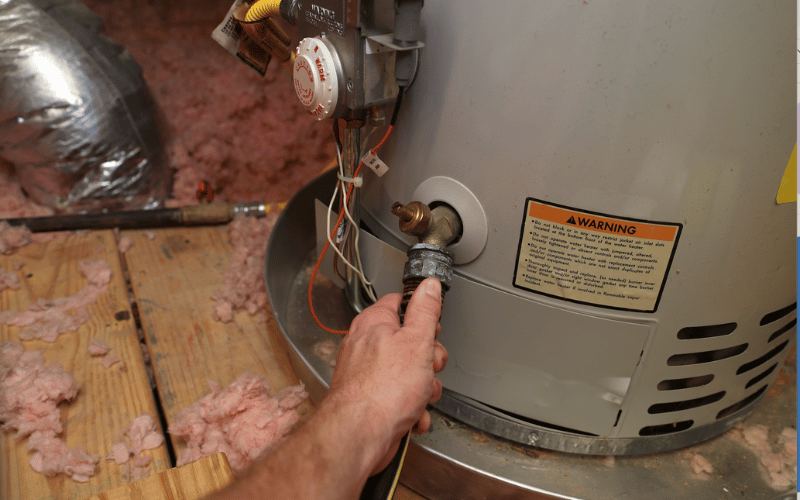Are you looking for related information about Tips on Maintaining a Water Heater?

Warm water is crucial for daily convenience, whether it's for a revitalizing shower or washing meals. To guarantee your hot water system runs successfully and lasts longer, routine upkeep is essential. This write-up offers useful pointers and insights on exactly how to preserve your home's warm water system to avoid interruptions and pricey repairs.
Introduction
Keeping your home's warm water system could seem difficult, yet with a few simple actions, you can ensure it operates efficiently for many years to come. This guide covers whatever from recognizing your warm water system to DIY maintenance pointers and knowing when to contact specialist help.
Relevance of Preserving Your Warm Water System
Regular upkeep not only prolongs the life-span of your hot water system however also ensures it runs efficiently. Ignoring maintenance can result in lowered efficiency, higher power bills, and also early failure of the system.
Indications Your Warm Water System Needs Upkeep
Knowing when your warm water system needs focus can prevent significant concerns. Look out for indications such as irregular water temperature level, unusual sounds from the heating system, or rusty water.
Comprehending Your Warm Water System
Prior to diving into maintenance jobs, it's handy to understand the fundamental elements of your warm water system. Typically, this includes the hot water heater itself, pipelines, anode poles, and temperature controls.
Regular Monthly Upkeep Tasks
Normal month-to-month checks can help catch minor problems prior to they rise.
Flushing the Water Heater
Flushing your hot water heater eliminates sediment buildup, improving efficiency and prolonging its life.
Checking and Replacing Anode Rods
Anode poles protect against rust inside the storage tank. Checking and replacing them when worn is essential.
Examining and Adjusting Temperature Setups
Readjusting the temperature level settings guarantees optimal performance and safety and security.
Do It Yourself Tips for Upkeep
You can do a number of maintenance jobs on your own to maintain your hot water system in top condition.
Looking for Leakages
Frequently inspect pipelines and connections for leaks, as these can lead to water damage and higher bills.
Testing Stress Alleviation Valves
Checking the pressure relief valve ensures it functions correctly and prevents excessive pressure accumulation.
Insulating Pipes
Insulating warm water pipelines minimizes warm loss and can save energy.
When to Call a Professional
While do it yourself upkeep is helpful, some problems need professional proficiency.
Facility Concerns Needing Professional Help
Instances consist of major leaks, electrical troubles, or if your hot water heater is regularly underperforming.
Routine Specialist Upkeep Perks
Professional maintenance can consist of complete evaluations, tune-ups, and ensuring conformity with security standards.
Verdict
Routine maintenance of your home's warm water system is necessary for effectiveness, longevity, and price savings. By following these pointers and understanding when to look for expert help, you can make certain a reputable supply of warm water without unforeseen disruptions.
How to Maintain an Instant Hot Water Heater
Before tinkering with your hot water heater, make sure that it’s not powered on. You also have to turn off the main circuit breaker and shut off the main gas line to prevent accidents. Also turn off the water valves connected to your unit to prevent water from flowing into and out of the appliance. 2. When you’re done, you have to detach the purge valves’ caps. These look like the letter “T” and are situated on either side of the water valves. Doing so will release any pressure that has accumulated inside the valves while at the same time avoid hot water from shooting out and burning your skin. 3. When the purge valves’ caps are removed, you have to connect your hosing lines to the valves. Your unit should have come with three hoses but if it didn’t, you can purchase these things from any hardware or home repair shops. You can also get them from retail stores that sell water heating systems. Read the user’s manual and follow it to complete this task properly. When the hosing lines are connected, open the purge port’s valves. 4. You should never use harsh chemical cleaners or solutions when cleaning your unit. Make use of white vinegar instead. It should be undiluted and you’ll probably use about 2 gallons. 5. Now flush your water heater. This task should probably take about 40 minutes. We can’t give you specific directions for this because the procedure is carried out depending on the type, model and brand of your heater. With that being said, refer to the user’s manual. 6. When you’re done draining the unit, you have to turn off the purge port valves again. Remove the hosing lines that you earlier installed on each of the water valves. Put the valve caps (purge port) back in their respective places and be very careful so as not to damage the rubber discs that are found inside these caps. 7. Now that everything’s back in place, check your user’s manual again to find out how to reactivate your water heating system. 8. Once it is working, turn one of your hot water faucets on just to let air pass through the heater’s water supply pipes. Leave the tap on until water flows smoothly out of it. https://www.orrplumbing.com/blog/2014/september/how-to-maintain-an-instant-hot-water-heater/

We were brought to that write-up on How to Maintain Your Water Heater & Prolong its Life through a buddy on a different web property. If you please take the time to promote this write-up if you enjoyed it. Thanks a lot for your time. Come back soon.
Call Today